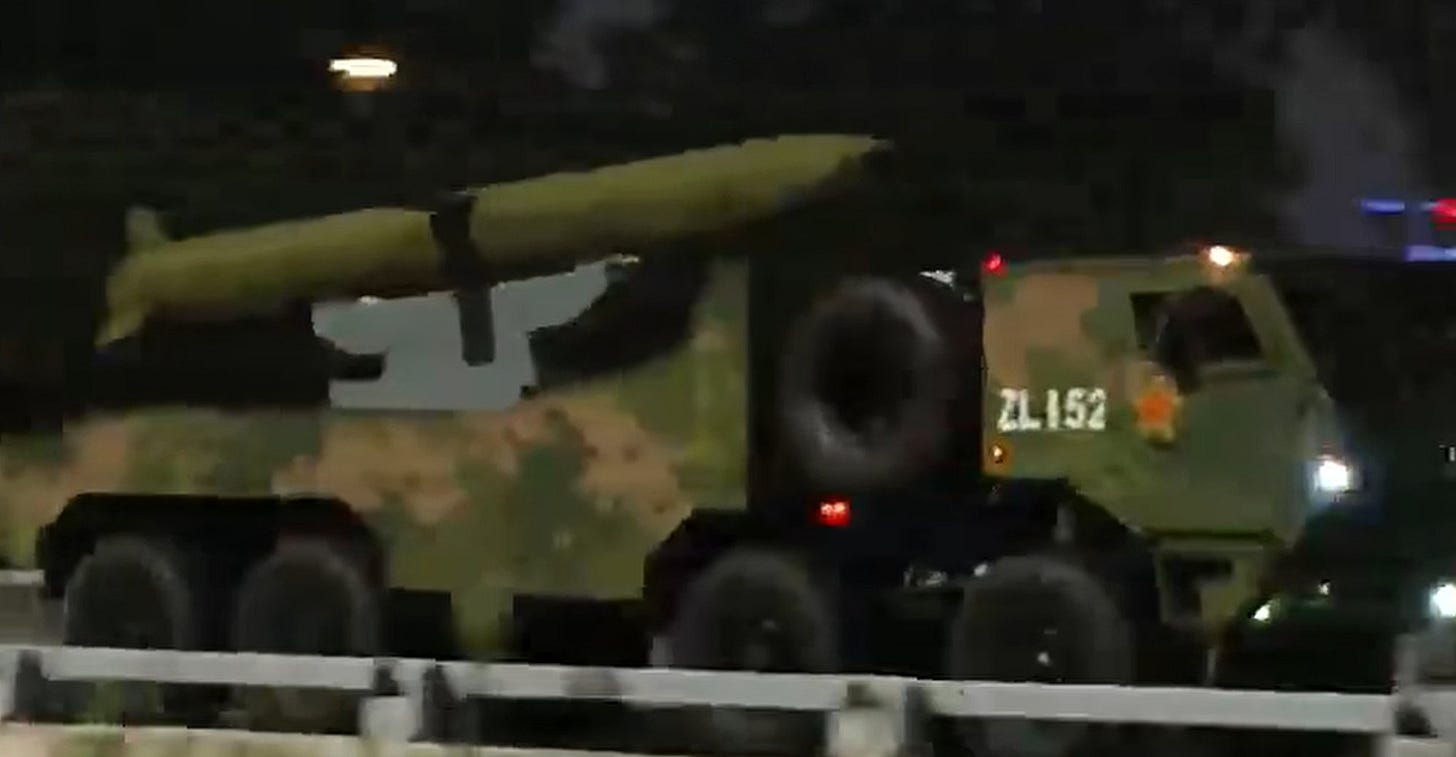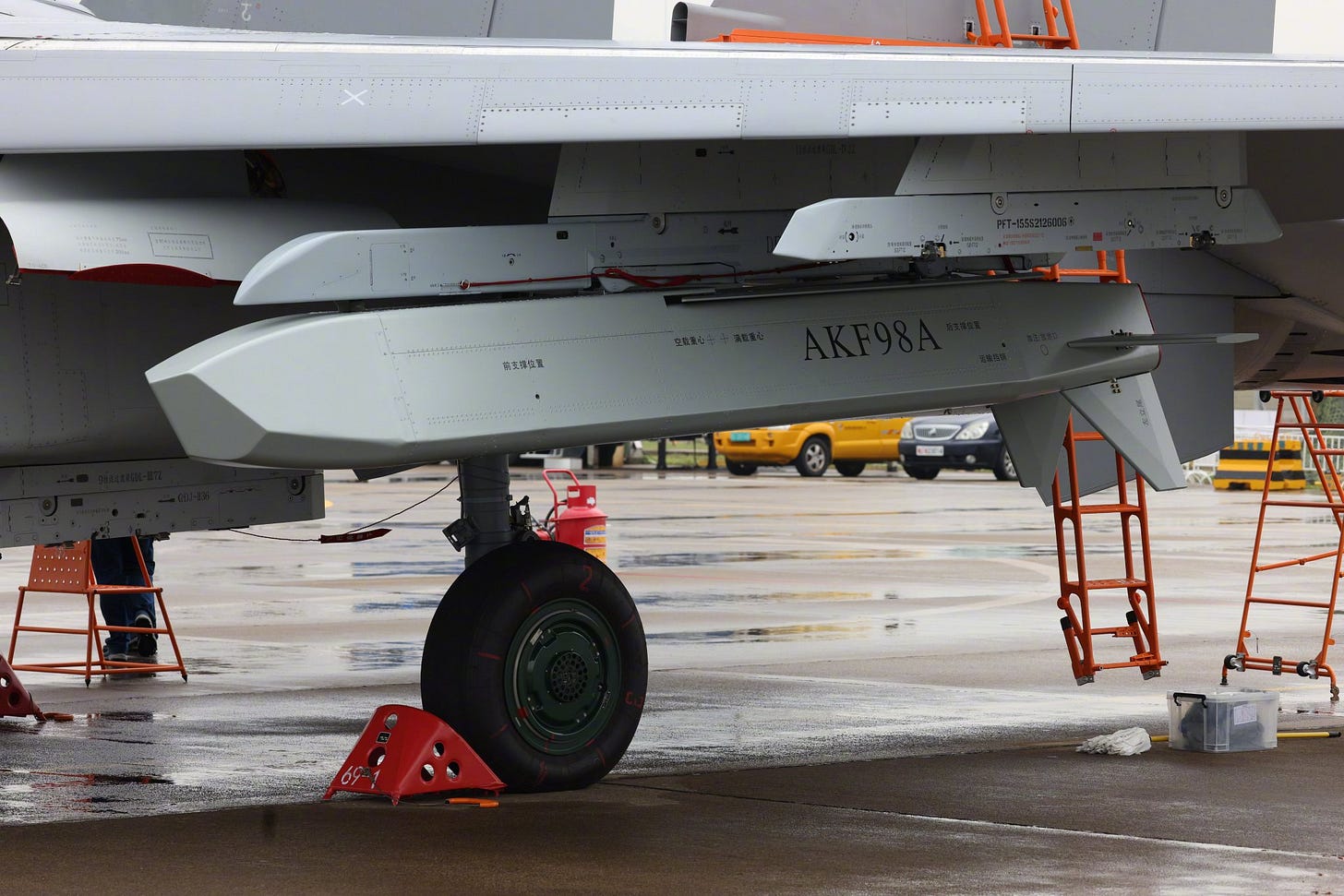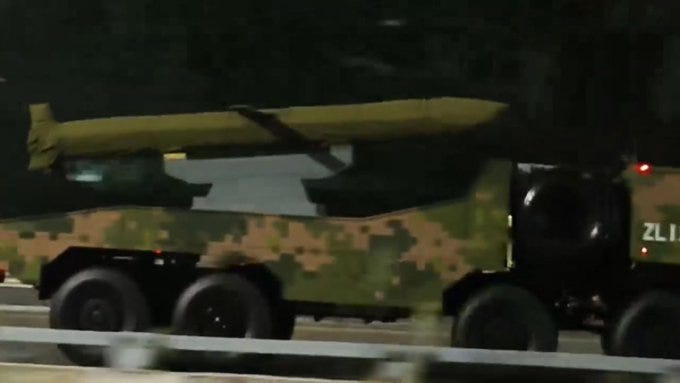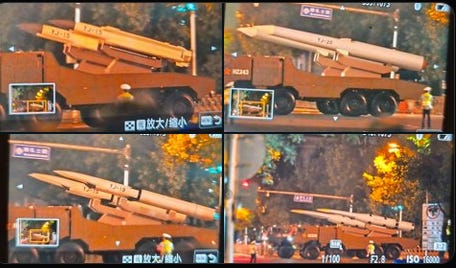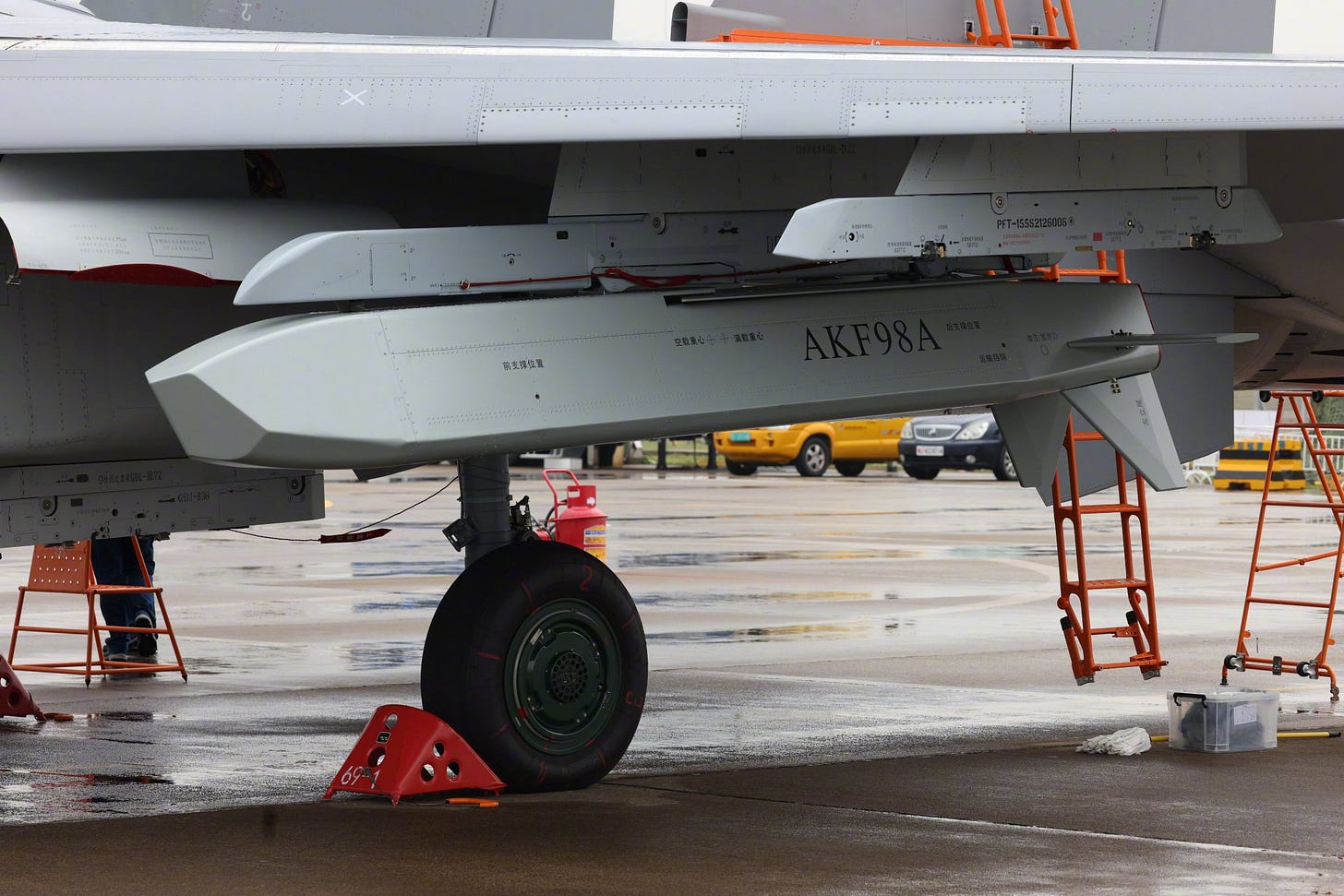Parade Rehearsal Indicates Possible Forthcoming Unveiling Of A New Chinese Land-Attack Cruise Missile
🇨🇳
Note: The following text was originally posted on my X/Twitter account.
The PLA Rocket Force's (PLARF) commitment to a seemingly new subsonic ground-launched land-attack cruise missile is a notable development given the strikingly modest scale at which the CJ-10 and CJ-10A cruise missiles are understood to have been deployed.
While the largest—likely nuclear-armed—missiles on display at the forthcoming parade will likely receive the most attention, the smaller missiles of unknown type/designation are of great importance to the evolving regional military balance. The successors to the PLARF's now quite old DF-15 and DF-16 (and DF-11) remain to be seen, and the PLA will have to demarcate the division of roles and responsibilities between the PLARF and the PLA Ground Force at the shorter range end of the spectrum.
The PLA Rocket Force's new ground-launched land-attack cruise missile has a very different design than the PLA Air Force's KF-98 land-attack cruise missile, which was unveiled at the 2022 Zhuhai Airshow. Time will tell whether this new cruise missile of unknown designation will also be used by the PLA Air Force bomber force and perhaps PLA Navy surface ships and submarines.
The following text was posted on 19 August 2025:
In a recent post, I characterized this mockup of a new, previously unseen cruise missile design as a system that is seemingly associated with the PLA Rocket Force (PLARF). If this is the case, the PLARF would be reembracing ground-launched land-attack cruise missiles after years of prioritizing ballistic missiles and related strike munitions, such as boost glide vehicles (BGV—also known as hypersonic glide vehicles, or HGVs). While it is best to wait for an image/video that features the designation for this new cruise missile design, it is productive to consider what can be discerned from currently available information.
A mockup of a new cruise missile design has been seen on a truck—which is unambiguously not a launcher—at a parade rehearsal. The truck in question has a "ZL152" marking inscribed on it. Unambiguous PLARF transporter erector launchers have been seen participating in the parade rehearsals with "ZL___" markings. Note that there is nothing unusual about the use of a missile mockup in a parade—safety considerations alone mean that any munitions on display in a parade held in a built-up area in front of VIPs and many spectators should not contain high explosives or energetic fuels.
The fact that the cruise missile mockup is carried by a truck may indicate that it is not a PLARF system, given that PLARF missiles have, to date, featured in parades with loaded onto the relevant launcher vehicle. There is no obvious reason as to why the PLARF would want to unveil a new cruise missile in a manner different from how it unveils a new ballistic missile. The mockup of the new cruise missile initially appeared to have been coloured green. The PLA Air Force (PLAAF) and PLA Navy Air Force (PLANAF) are not known to employ munitions with earth tones. A screen capture from a video (see image), however, indicates that the cruise missile is covered by a green tarp. Other missile mockups carried by trucks for the purposes of the forthcoming parade—namely, a series of anti-ship munitions—were first seen at rehearsals in a veiled state before being unveiled, a process that revealed the designation of the missiles in question. We are likely to encounter a similar dynamic with this cruise missile design.
Reviewing footage from the 2019 military parade in Beijing reveals that non-PLARF systems, namely nuclear-armed submarine-launched ballistic missiles operated by the PLA Navy, were paraded on trailers hauled by trucks that also featured "ZL___" markings. ZL stands for Strategic Strike Module.
Given the above, this new cruise missile may not be a PLARF system but a cruise missile intended for use—perhaps exclusively—by another PLA service branch such as the PLAAF. While the PLA Navy (PLAN) has used trucks to display mockups of missiles carried onboard its ships—a dynamic that will be repeated at the forthcoming parade—the PLAAF's participation in recent parades has been limited to aerial displays with the exception of the mobile radars and surface-to-air missile systems operated by the PLAAF, the personnel and armoured vehicles of the PLAAF Airborne Corps (airborne/parachute infantry), and the PLAAF's uncrewed fixed-wing aircraft—no PLA parade in a built up area has featured the participation of fixed-wing uncrewed aircraft in flight (likely as a safety precaution). Want to see the PLAAF's air-to-air and/or air-to-surface munitions? You have to look for videos and images of the PLAAF aircraft flying above parades to see if they are carrying any (unarmed) training munitions. While other militaries regularly place real specimens and/or mockups of aerial munitions and related equipment on truck trailers that feature in the vehicular section of a military parade, the PLAAF has not done so, and there is presently no indication that it will do so on 3 September. As a result, the PLAAF will be breaking precedent if it will unveil a new air-launched cruise missile by placing a mockup on a truck as opposed to loading an unarmed specimen on one of the H-6K/H-6J/H-6N bombers that will be part of the aerial display.
It is, of course, possible that the new cruise missile is not a PLAAF system—or at least not a system that is exclusive to the PLAAF—and will be unveiled as a PLAN system. While possible, it is important to note that trucks featuring a “HZ___” marking—denoting Maritime Operations Module—have been used to carry mockups of PLANAF systems other than nuclear-armed submarine-launched ballistic missiles. This notably includes all four previously unseen new anti-ship munitions—the YJ-15, YJ-17, YJ-19, and YJ-20—that will be formally unveiled at the forthcoming parade. If the new cruise missile is a PLAN system, there will also be a break with established precedent. In itself, the absence of an HZ marking on the truck carrying the cruise missile mockup suggests that this is not an anti-ship cruise missile design, even if it can be launched from a PLAN warship or submarine.
It is important to note that not all PLAAF systems have been formally unveiled in a parade. A case in point is the KF-98 air-launched cruise missile, which was unveiled at the 2022 Zhuhai Airshow, where it was loaded onto a PLAAF J-16 and JH-7 aircraft and handled by PLAAF ground crews in a static—non-flying—display that was unambiguously distinct from the various state-owned enterprise industry displays, including the Aviation Industry Corporation of China (AVIC) display, which prominently featured an (AVIC-owned/non-PLA) J-10CE fighter. The KF-98 has notably not been seen since.
Something to keep in mind is that this new cruise missile may be a nuclear-armed, or at least dual-use, design, a dynamic which may account for why it is being featured at the parade without a dedicated launcher, which would be appropriate if it is a PLARF system, why it is not being carried by one or more H-6K/H-6J/H-6N bombers participating in the parade, which would be appropriate if it was a conventionally-armed PLAAF system, and why it is being transported on a truck with a ZL—Strategic Strike Module—rather than HZ—Maritime Strike Module—marking. This may—or may not—also account for the other missile mockups—which appear to be ballistic missiles, perhaps air-launched ballistic missiles—that have also been seen at the rehearsal carried by trucks with ZL markings.
All things considered, it is too early to tell which PLA service branch is operating/will operate this new, previously unseen cruise missile design. It is best to wait for the designation to be revealed once the cruise missile mockup features in a rehearsal/the actual parade without the green tarp under which it is currently veiled. If the designation has the CJ- prefix, it is likely to be a PLARF system. If the designation has a KF- prefix, it is likely to be a PLAAF—and/or PLANAF—system. If the designation has a YJ-prefix, it is likely to be a PLAN—and/or PLAAF—system. It is also important to consider the possibility that multiple PLA service branches will be/are operating this new cruise missile design.


